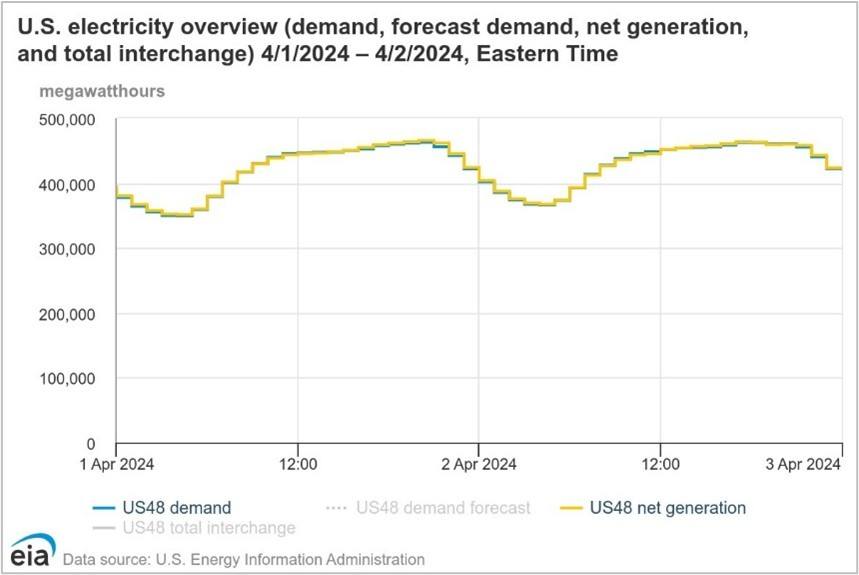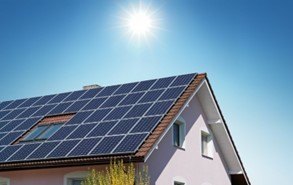Earth Day Reflections on Sustainable Energy Production
April 22, 2024 in Learning, Wonders of the Workplace
By Sam Deschenes
FMP’s Sustainability Committee actively works to help us make greener choices for FMP, while providing education and outreach to the rest of our workforce. In honor of Earth Day, the Sustainability Committee planned a few events and activities for FMPers, and also wanted to expand the conversation to our larger blog community.
Understanding the challenges and nuances of shifting to a greener energy future can be complicated. The mixture of micro- and macro-economics, quasi-governmental operation, and interconnected actions have historically made the conversation a challenge for many of us (including myself). However, I found a way to approach this topic that works well for me, and I’m hoping it might be helpful to others as well. Seeing as Earth Day is around the corner, this felt like the right time to start the conversation!
To begin to understand the topic ahead, it’s best to think about green energy (and energy in general) in three stages: Usage, Transmission, and Production. Let’s take a closer look at these to explore some of the opportunities and challenges for transitioning to greener energy sources.
1. Usage

The number one way to help move toward a greener energy future is to reduce energy demand. If less energy is required, then green energy is able to meet the demand. Reducing demand takes making personal and business choices. While personal choices are often discussed (turning off lights, adjusting thermostats, etc.), we should remember that those choices should extend beyond your home. Reducing energy demand from businesses and organizations can make significant impacts. Actions like upgrading old equipment to more efficient types, reducing waste, and creating green checklists can make significant differences at work as well. Additionally, starting to evaluate, benchmark, and lower greenhouse gas emissions from a corporate level can go a long way in helping intentionally and incrementally lowering demand over time.
2. Transmission
We all have heard about it: the “Grid.” While the grid encompasses more than just transmission of energy, let’s still take a moment to look at those powerlines. They are one of the challenges green energy faces. Often where green energy is produced is not proximal to where it is needed, thus it must pass through powerlines. As more solar farms and other greener sources of energy are built (especially on a commercial scale), the infrastructure must be built to manage and transmit that energy. And while powerlines can be built or upgraded, this interconnection has to be considered with development. However, these complications can be minimized on a smaller scale. Home-based solar or geothermal pumps for individual homes can help offset the energy demand for an individual home. And if a home produces a surplus of energy, it can often be easily integrated into the existing infrastructure.
3. Production
When looking at the most common energy sources, an important question to consider is the relative pros and cons of each source. By understanding the challenges and economics behind energy production, we can better understand our options, both individually and systemically, to switch to more and more green alternatives.

Let’s take nuclear energy as a starting example; it’s a great source for consistent, clean, and high-power energy output, making it ideal as a main energy source. However, nuclear is less capable of ramping energy up and down based on the daily demand cycle, faces high upfront costs, relies on non-renewable resources, and creates nuclear waste. Collectively, this often means nuclear serves as a broad foundation but is supplemented with other energy sources to mitigate challenges.
As prices and thresholds to entry have gone down, solar has become a popular, clean energy source both at small and large scales. Solar faces energy production challenges based on the day and night cycles, and efficiency challenges based on sufficient amounts of clear, direct sunlight and the cleanliness of panels. With variable weather and consistent cleaning, solar can be a good supplemental energy source, but struggles as a broad primary solution.
Looking Toward the Future
Similar pros and cons develop when you look more deeply into wind, hydroelectric, and other emerging production technologies. Ultimately, a greener future likely relies on a multi-solution approach. A mixture of green energy production and continued innovation and investment into energy storage and transmission are keys to a more sustainable future. For now, continue to look for opportunities to reduce your demand (both personally and professionally) and find opportunities to support your local green initiatives.
Our blogs are sourced from employee contributions. Blog postings reflect our employees’ technical knowledge and methods, client experiences related to human capital and management consulting, and showcase the diverse perspectives of our workforce. The blog team welcomes input from all employees on workplace-related topics. Please contact us to see how you can contribute to a future posting.

Sam Deschenes is a Senior Human Capital Consultant and joined FMP in November 2020. He is also the head of FMP’s Sustainability Committee. He received his Master’s in Industrial/Organizational Psychology from Middle Tennessee State University. Sam works with agencies to improve and implement performance management, performance pay, and benefits will providing support with data analysis, policy analysis, and program management. In his free time, Sam enjoys running, drumming, deep diving into his newest interest, or exploring the offerings of D.C.